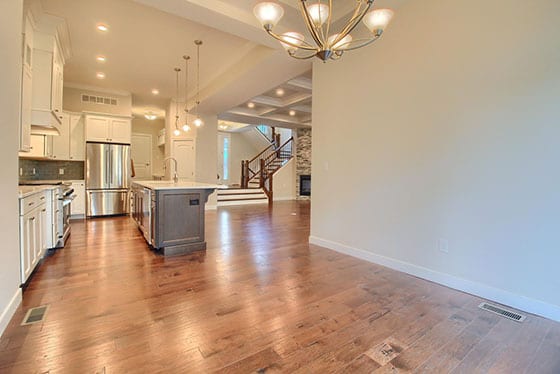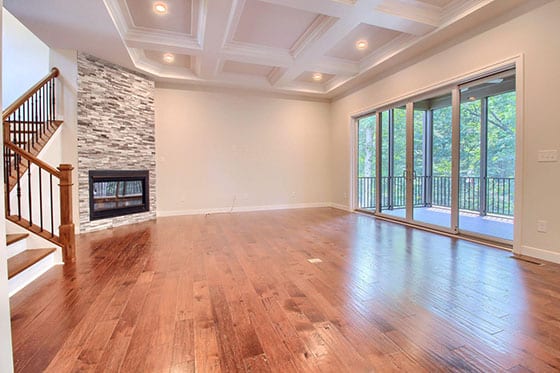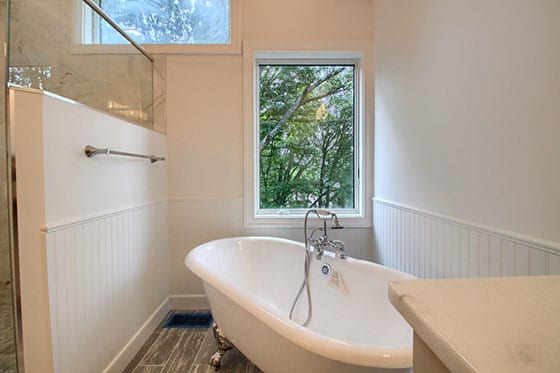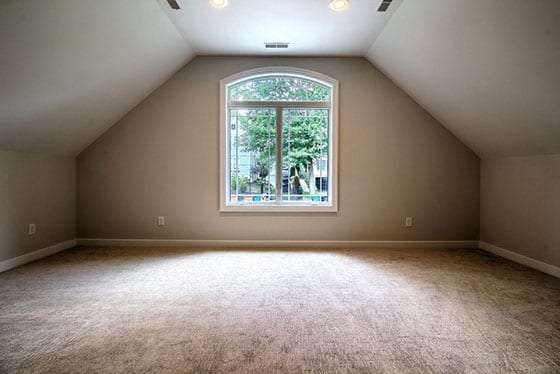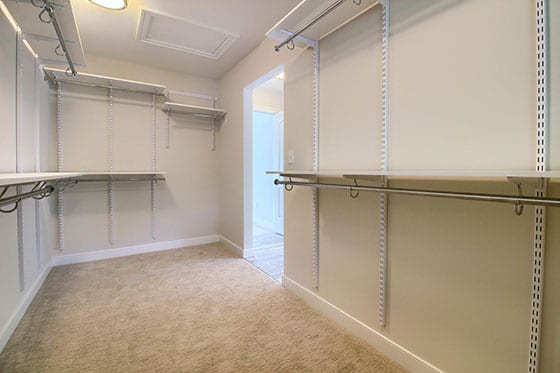“This Old House” Inspires CFO to Kick the 9-5 and Become a Builder.
Decides to put his “TOOL” collection to work!
Seven years of flipping houses (buy, rehab, sell) gave Mark Pottebaum the motivation to quit his day job and go full time into the custom home business. His first custom home job commenced in 2015 and by 2017, he and his team had started 15 homes. Mark grew up working with his Grandfather building homes and decks. That’s where his obsession with tool collecting started and if was just logical to put them to work building club houses for his friends as well as stating a lawn mowing business. Mark studied accounting in college but still continued to collect tools and work on major projects around the house until he purchased a fixer-upper to entertain he and his wife on weekends! Mark continued to rehab homes until in 2012 he decided to start Redknot Homes and quit his CFO job. Redknot has continued to grow every year since then and 2017 was a record year for custom homes with 15 started.
But Mark doesn’t just build custom homes anywhere, he specializes in building into the hillsides along the Ohio River and throughout the region. Mark also specializes in second homes for families looking for something different. And young professionals who grew up in traditional homes and want something uniquely their own. Also, business professionals that are relocating from Europe are a segment Mark likes to serve. Former builder, Perry Bush is Redknot’s home designer, and Audbry Welsch is Redknot’s interior designer, she helps with hardware and finishes selection. Contemporary modern versus ultra modern is what is popular now. Redknot also builds for other architects.
From our interview with Mark Pottebaum, “We are a local and take pride in constructing custom homes by working directly with our client throughout the entire process. I’m personally involved in every project from the beginning to the end with an on-site Redknot project manager handling the daily logistics and everything else that comes along.
“And we manage each project by leveraging our on-site Superintendent, in office Project Manager, and an online project management system (which makes it possible to access a project from any computer, tablet, or smartphone). With this system, we can efficiently and effectively build any home via critical path scheduling, real-time communication, and integrated quality control checklists that touch every aspect of construction. This system also allows us to communicate with our clients on a real-time basis to share periodic updates, make selections, track allowances and change orders, and share photos and documents.”
“At Redknot Homes, we know and understand the importance of building Green. LEED, Leadership in Energy and Environmental Design, is changing the way we think about how buildings and communities are planned, constructed, maintained and operated. Of the homes we certify, our typical specifications achieve a Gold level LEED rating, and they are working Platinum now.”
Current LEED Homes finished or under construction. Some of these homes are LEED Version 4 and not covered by this article.
3224 Golden Ave. – LEED Gold. Owner is an architect from Mexico and is quoted in this article. Perry Bush designer.
3222 Golden Ave. – LEED Platinum. Perry Bush designer.
3481 Golden Hollow – LEED v4. Sally Noble architect.
3570 Handman Ave.
3572 Handman Ave.
3572.5 Handman Ave. Mark knocked one home down and built three on the lot.
3580 Handman Ave. – LEED v4.
430 Whitman Court – LEED v4.
655 Delta Ave.
407 Collins Ave.
Cincinnati history of tax abatements
Since 2002, the city of Cincinnati has granted 10-year tax abatement on structures. In 2007, the city added an additional five years to the tax abatement for those receiving LEED Certification. In 2011, the tax abatement for LEED became a bit more layered and difficult. Now, owners must achieve LEED Silver to receive a tax break on the first $285,000 of the structure’s value. LEED Gold has a limit of $565,000, and it’s unlimited if you achieve LEED Platinum. Because of the tax abatement, nearly every new home in Cincinnati is LEED Certified and builders have become quite familiar with how to do it cost effectively.
Certification level decision story
LEED for Homes
The LEED for Homes Rating System provides a basis for quantifying the benefits of green homes, thereby facilitating the widespread construction of more sustainable homes. One of the first steps in planning a LEED home is to adjust the certification thresholds based on the material and energy impacts. All else being equal, a large home consumes more materials and energy than a small home over its lifecycle. LEED compensates for these impacts by adjusting the thresholds for each award level. Thresholds for smaller-than-average homes are lowered, and thresholds for larger-than-average homes are raised. A home’s threshold for LEED Gold may be 72 points. A 4,500-sq.-ft. home with five bedrooms would be about 85 points.
In the end, the homeowner will have a well built and third-party certified home. Passing the blower door test alone is significant. Blower door tests are used to prove the air sealing quality of the construction. During the test the home is depressurized to -50 Pascal and measurements are recorded throughout the home to verify that outside air isn’t leaking into the home at a rate higher than required. It proves the home won’t be drafty and uncomfortable. Contrary to those builders who tell home owners that homes need to breathe for fresh air, it is much better to control the ventilation rather than allowing shoddy construction of leaky vapor barriers to supply fresh air to the home.
The LEED Certification system is broadly categorized into five equally important parts that demonstrate measurable environmental benefits: Site, Water, Energy, Materials, and Indoor Environment Quality. The following is a review of the features of this home according to the LEED for Homes system.
Prerequisites include building above the 100-year floodplain, not habitat for endangered species, built no closer than 100 feet to water or wetlands, land that wasn’t a public park and land that doesn’t have prime, unique or soils of state significance. Excavated topsoil was reused; runoff was controlled, so it didn’t contaminate storm water sewers or erode hillsides.
The Innovation and Design Process section of LEED includes Integrated Project Planning, which maximizes opportunities for integrated, cost-effective adoption of green design and construction strategies. A Preliminary Rating is arrived at as early a practical, they conducted a preliminary LEED for Homes meeting, with the participation of the key members of the project team and Green Building Consultants (the LEED for Homes Certification Provider) to target the level of LEED, select credits and assign the parties accountable. Typically this includes holding monthly meetings to review project status, introduce new team members to the project goals, discuss problems encountered, formulate solutions, review responsibilities and identify next steps. The Integrated Project Team is formed to maximize the opportunities for integrated, cost-effective adoption of green design and construction practices.
A big help with this is that at least one principal member is a Professional Credentialed with respect to LEED for Homes.
The Innovation and Design Process section also includes the Durability Management Process, which promotes durability of the high-performance building enclosure, its components and systems through appropriate design, materials selection, and construction practices. Prior to construction, the project team will identify risks, responses regarding pests, storm damage and moisture control measures.
The home’s plans include the following features: No paper-backed backer board or carpet in tub, shower and spa areas, no carpet within three feet of the entryway, drain and drain pans for tank water heaters and clothes washers in or over living areas, and exhausting conventional clothes dyers directly to outdoors.
Durability Management requires that the builder have a quality management process in place to ensure installation. A third-party verified these durability conditions.
Innovation or regional design incorporates additional green design and construction features with measurable environmental benefits.
Location and Linkages include site selection, which is a very important aspect of sustainable homes. This home isn’t in a floodplain or built within 100 feet of water or wetlands. The infill site with existing infrastructure didn’t replace prime farmland or parkland and build on habitat or threatened or endangered species. Excavated topsoil was reused; runoff was controlled, so it didn’t contaminate storm water sewers or erode hillsides.
Preferred location guidelines encourage the building of LEED homes near or within existing communities. This project was an infill site, which means at least 75 percent of the perimeter immediately borders previously developed land. It was built on a previously developed lot and uses Existing Infrastructure because it is within a half mile of existing water and sewer lines.
Community Resources / Transit require it to locate close to basic resources such as arts and entertainment center, bank, convenient store, daycare, fire station, cleaner, library, pharmacy, places of worship and schools. This home achieved Outstanding community resources / transit because it is within one-quarter mile of eleven, one-half mile of 14 and 60 transit rides per weekday. The highly desired urban location encourages walking, physical activity, and time spent outdoors; it is located within one-half mile of a three-quarter acre of a public open space.
Although the focus of green building is typically on the built structures located on a site, the design of the site and its natural elements can have a significant environmental impact. Site clearing and earth moving can contribute to considerable runoff, leading to soil erosion and alteration of natural drainage patterns both on and off-site. The home utilized Erosion Controls During Construction.
The Minimizing Disturbed Area of Site credit is automatically granted to high-density construction, in recognition of the fact that compact development enables communities to set aside land for conservation. They placed the home to minimize drainable pattern changes, scheduled construction in phases to minimize disturbance and clearly marked areas that are not to be disturbed. Maintaining vegetation in those areas.
The Sustainable Sites category of credits includes no invasive plants, basic landscape design, limiting & non-conventional turf, and drought tolerant plants such as Russian sage, lavender, black-eyed susan, hellebore, hosta and arborvitae. Since the provision and distribution of potable water is costly and energy intensive, particularly during dry periods, a more sensible strategy is to design landscaping that requires less potable water.
The permeable lot homes have permanent erosion controls on site and manage run-off from the roof.
The Sustainable Sites category of credits includes prerequisites to prevent construction runoff from damaging sewers and preserve topsoil. An infill site minimized disturbed area of the site.
The homes’ integrated nontoxic pest control methods include sealing external cracks and joints with caulking and installing pest-proof screens. There are no wood-to-concrete connections. Typically all cellulosic (wood type) material is treated with borate product to three feet above foundation as an additional pest control measure.
The Sustainable Sites category of credits includes prerequisites to prevent construction runoff from damaging sewers and preserve topsoil. This is accomplished by managing some of the runoff from the roof with a rain barrel and including a permeable garden on site.
The home’s integrated nontoxic pest control methods include sealing external cracks and joints with caulking and installing pest-proof screens. There are no wood-to-concrete connections. Typically all cellulosic (wood type) material is treated with borate product to three feet above foundation as an additional pest control measure.
LEED encourages use of compact development patterns on buildable land to conserve land and promote community livability, transportation efficiency and walkability. These residences are located in a Very High-Density Average of 20 or more dwelling units per acre.
Water Efficiency is a very important category of LEED. It includes water reuse, which is demonstrated by a rainwater harvesting system, which includes a rain barrel to capture water for landscape use. Water efficiency measures included a high-efficiency irrigation system including drip irrigation for 50% of planting beds, separate zone for each type of planting, timers for each zone, and sensors that recognize it has rained and no irrigation is needed.
Very high-efficiency fixtures and fittings were selected for indoor water use. Average flow rate is 1.75 gallons per minute, and 1.10 gallons per flush.
Regarding Energy & Atmosphere, data from the homebuilding industry indicate that roughly 1.5 million new homes are built each year and that the average size of new homes has doubled in the past 50 years. As a result, total U.S. fossil fuel use in homes has been steadily increasing. The average American consumes five times more energy that the average global citizen, ten times more than the average Chinese person, and nearly 20 times more than the average Indian.
Optimizing energy performance measures improve the overall energy performance of a home by meeting or exceeding the performance of an Energy Star labeled home. A Home Energy Rating System (HERS) analysis verification of the energy efficiency of the home will be performed. One of the homes, for example, has a HERS Rating of 44 which means that it is 56% more efficient than a typical home in Cincinnati. No ozone-damaging HCFC refrigerants are used in the air conditioning system.
The homes reduce energy consumption associated with the domestic hot water systems, including improving the efficiency of both the hot water system design and the layout of the fixtures in the home. Typically the total length of the circulation loop is less than 40 feet in one-story homes; add 2x ceiling height for two-story homes and 4x ceiling height for up to four story homes. Pipe insulation is at least an R4 on the hot side.
No ozone damaging HCFC refrigerants are used in the air conditioning system.
The choice of building Materials and Resources is important for sustainable homebuilding because of the extraction, processing, and transportation they require. Activities to produce building materials may pollute the air and water, destroy natural habitats and deplete natural resources. Construction and demolition wastes constitute about 40 percent of the total solid waste stream in the United States.
Materials and resources included framing efficiencies and off-site panelized construction leading to 88% of on-site waste diverted from landfills. Off-site panelized construction is similar to a factory-built home in that the quality of construction may be higher because the construction isn’t subject to the weather and the possibility of less highly trained carpenters.
Environmentally preferable products increase demand for environmentally preferable products and products or building components that are extracted, processed, and manufactured within the region. The country of origin was requested for each wood product.
Waste management practices require projects to reduce waste generation to a level below the industry norm. Construction waste management planning investigated and documented local options for diversion and measured it, which resulted in diverting at least 25 percent or more from landfills.
Americans spend an average 90 percent of their time indoors, where levels of pollutants may run two to five times – and occasionally more than 100 times – higher than outdoors, according to the U.S. Environmental Protection Agency. Many of the pollutants found indoors can cause health reactions in the estimated 17 million Americans who suffer from asthma and 40 million who have allergies, contributing to millions of days absent from school and work. Indoor Environmental Quality requires combustion venting which limits the leakage of combustion gases into the occupied space of the home. Indoor environmental quality included no unvented combustion appliances, carbon monoxide detectors in rooms that share a door with the garage; all fireplaces have doors, and space/water-heating equipment is designed with closed combustion or catalytic converters are specified.
Controlling indoor moisture levels to provide comfort, reduce risk of mold and increase the durability of the home is part of the moisture load control. They installed dehumidification equipment capable of maintaining humidity at or below 60 percent. They meet ASHRAE Standards and only exhaust air to the outdoors, not the attic or interstitial spaces.
Outdoor Air Ventilation measures reduce occupant exposure to indoor pollutants by ventilating with outdoor air. Prerequisites included bathroom and kitchen exhausts meeting ASHRAE Standard 62.2 airflow requirements, air is exhausted to outdoors by an Energy Star labeled bathroom exhaust. Third-party performance testing was performed to verify proper installation.
LEED Homes reduce moisture and exposure to indoor pollutants in kitchens and bathrooms by meeting ASHRAE Standards and only exhaust air to the outdoors, not the attic or interstitial spaces. Enhanced local exhaust uses occupancy sensors, automatic humidistat controller, and automatic timer or continuous fan. It included third-party performance testing.
Distribution of space heating and cooling provided appropriate distribution of HVAC in the home to improve thermal comfort and energy performance. Room-by-room load calculations ensured ducts are designed accordingly. A typical home which has improved the distribution of space heating and cooling includes a return air opening of 1 square inch per cfm of supply and continuous supply airflow rates in each room tested and confirmed. Very high performance, MERV 13, filters were installed.
Indoor contaminants were controlled during construction, and the design allows for contaminant control, which includes space for shoe removal and storage near the primary entryway.
A preoccupancy flush was performed to rid the home of contaminants that built up during the construction process.
Radon testing was done, and controls put into place if needed.
The homes have no HVAC in the garage to minimize pollutants from the garage, no garage or a detached garage. Attached garage penetrations and floor and ceiling joists connections are sealed to prevent pollutants from getting into the home. When the home does include an attached garage, it includes an exhaust fan.
Some homebuyers may know very little about green home construction. They may be unaware of the green features in the home, or they may be unfamiliar with how to use and maintain them. Without adequate training, the full benefits of the LEED measures likely will not be achieved. These homeowners will receive an operator and training manual as well as a one-hour walkthrough. They’ll also receive the LEED checklists and forms, manufacturer’s manuals and cleaning and maintenance guidance. Finally, they will receive two hours of enhanced training.
Awareness and education requirements include this article as part of the LEED Certification. It will be published online at Green Cincinnati Education Advocacy and the local USGBC’s Chapter site once certified. LEED signage was posted on the site.
Contact:
Redknot Homes
513-709-7000
9078 Union Centre Blvd, #350,
West Chester Township, OH 45069
https://www.redknothomes.com
[email protected]
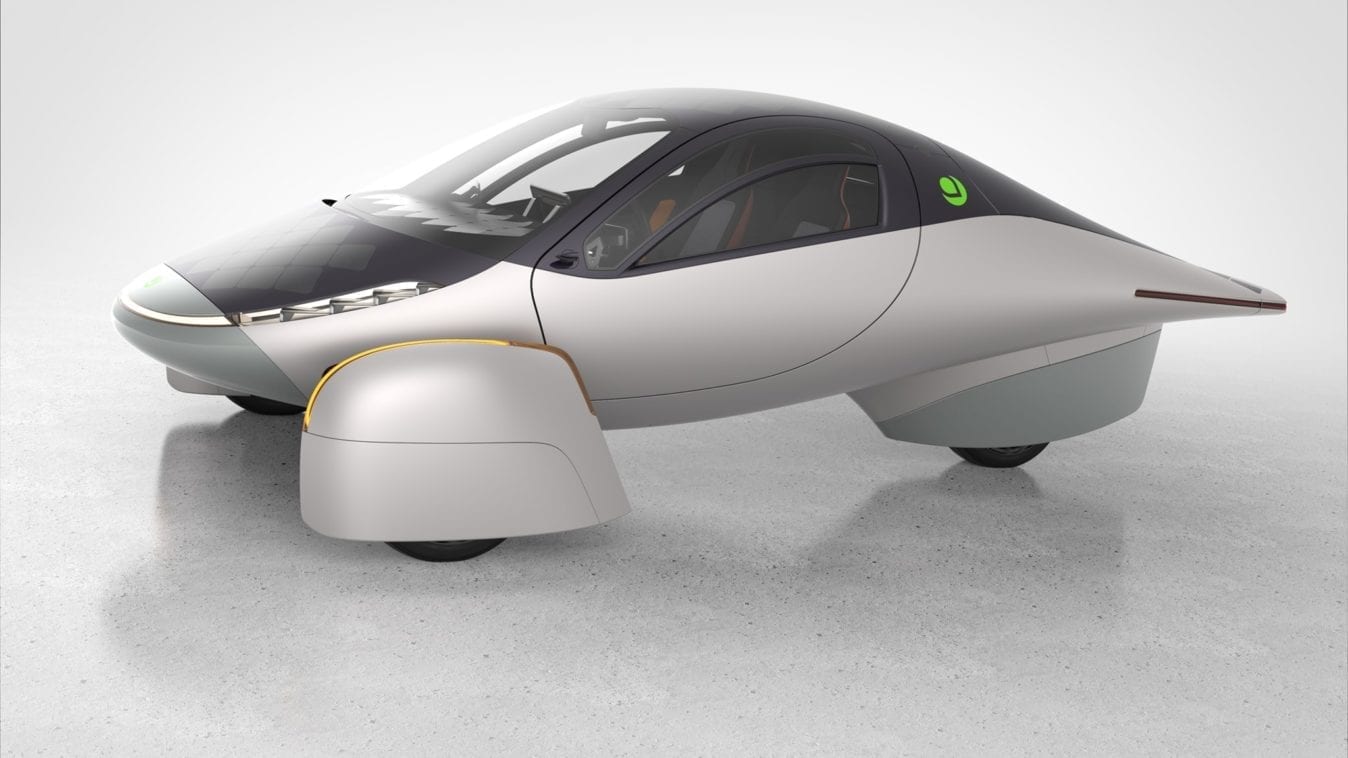
Get $30 off your Aptera Pre-Order
Click this link and you’ll receive a promo code for $30 off an Aptera pre-order. The 2nd Generation Aptera launched Dec. 4, 2020 and is on track to be the first self charging electric vehicle. The two-person, three-wheeler is covered with solar panels which allow self-charging but it also comes with a plug for charging. For every person I refer, I’ll earn a $1,000 credit towards an Aptera. After referring 26 people, I’ll score a free standard edition model. I’m a volunteer Aptera Ambassador, read more about this incredible solution to beautiful design and the ultimate in sustainability! Thanks for your referral, Chuck Lohre, Editor, Green Cincinnati Education Advocacy. #aptera #apteramotors


